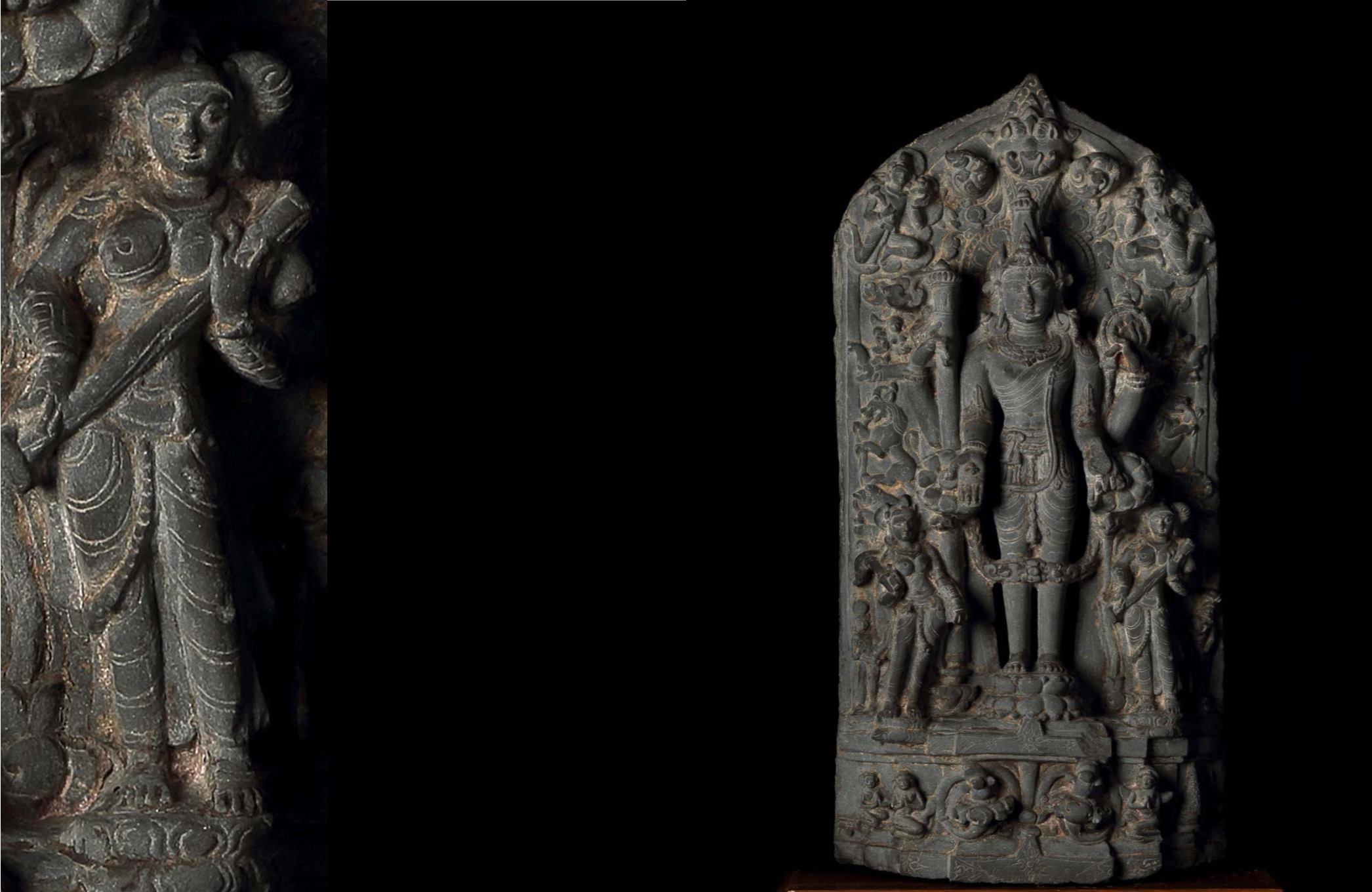

32
33
T
his intricately carved stele shows a depiction
of Vishnu, or Vasudeva, who was popular in
ancient Bengal. Pratapaditya Pal observes that
this particular iconography follows descriptions given
in the Matsyapurana, either from the 5th century or
an earlier religious text. He writes that in the relevant
passages, “Vasudeva should hold the club and the lotus
on the right and the wheel and the conch on the left.
The two spouses, Sri and Pushti, should accompany
him, and the surrounding archway should be adorned
with celestials:
vidyadhara
(holders of knowledge)
and
gandharva
(musicians), various floral designs
(
patravalli
), and animal motifs.” (
Asian Art at the
Norton Simon Museum, Volume 1: Art from the Indian
Subcontinent
, Pasadena: Norton Simon Museum of
Art, 2003, p. 197) True to this description, Vishnu holds
his attributes. The lotus attribute is shown as a small
flower attached to the open palm of his lower right
hand.
Vishnu is accompanied by Sri, seen with a lotus
standing to his right, and Pushti with the
veena
, stands
to his left. Sri and Pushti are Lakshmi and Saraswati
respectively, and their attributes identify them as
the two goddesses. Two smaller figures stand next
to the goddesses: Padmapurusha to Vishnu’s right,
and Chakrapurusha to his left. On either side, two
mythical lions are seen trampling elephants. Above
Vishnu, two
vidyadhara
bring garlands as offerings,
and a
kirtimukha
crowns the summit
. V
ishnu stands
on a lotus pedestal, below which three adorants kneel
in worship of the god and his consorts.
PROPERTY OF A GENTLEMAN
20
VISHNU WITH HIS RETINUE
WEST BENGAL, 10
TH
/11
TH
CENTURY
Phyllite
21.75 in (55.2 cm) high
$ 23,440 ‒ 31,250
Rs 15,00,000 ‒ 20,00,000
NON‒EXPORTABLE REGISTERED ANTIQUITY
Lower right detail


















